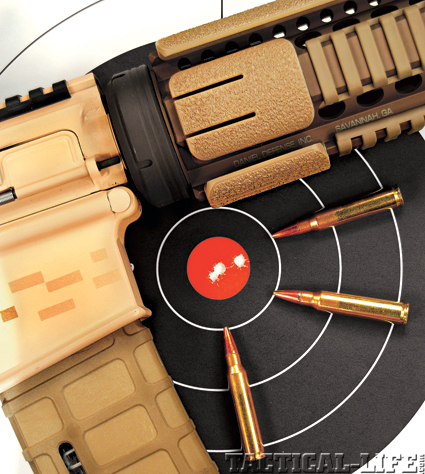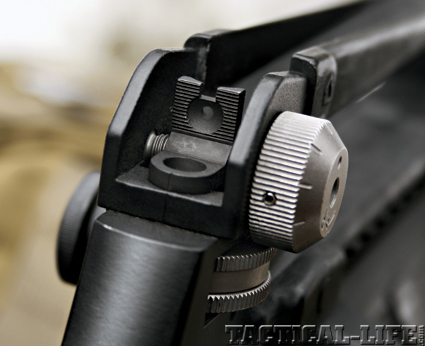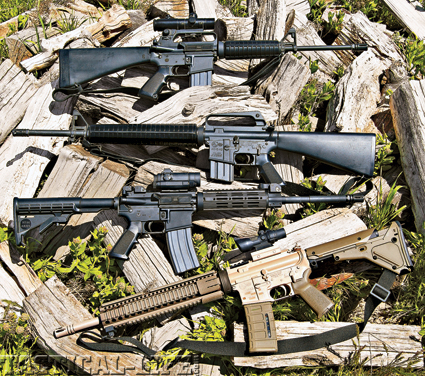The CSAT Rear Sight from XS Sights features a square notch atop the peep sight that is oriented for CQB-distance engagements.
The question of “What do I zero my AR-15 at?” is a perennial favorite, and the issue is often a controversial one. A common theory is that a 25-yard battle zero will carry you out to past 200 yards. The subject is one that comes up so often that it finally drove me to the point of testing it out, fully within a law enforcement context.
The author tested point-of-impact changes with four ARs. From top: A Colt Lightweight Sporter, Colt Sporter II, Stag Model 3 and Colt a AR-15A3 Tactical.
Test Parameters
To keep things simple, the .223/5.56mm caliber was chosen because it is the most commonly encountered chambering in feet-on-the-ground LE hands today, and the AR-15 platform for the same reason. The guns tested were three Colts and a Stag Arms. The first was a 1984 Sporter II transitional “flatside” model with 20-inch barrel, 1-in-7-inch twist, full traditional A2 military stock and handguard, and the older A1 type sights in a non-detachable carry handle. The second was a 1994 Lightweight Sporter with 16-inch “pencil” barrel, 1-in-7-inch twist, more current “fenced” sides, standard military A2 carbine stock and handguard, A2 drum sights, a non-detachable carry handle, a 1-inch stock extension, and a 20-year-old Marksman Elite Model CMO four-power carry-handle scope with bullet-drop compensator adjustments to 500 yards.
Advertisement — Continue Reading Below
The third was an AR-15A3 Tactical model from the early 1990s with 16-inch heavy barrel and 1-in-9-inch twist bought, used and later dressed up with a Lauer Custom Weaponry DuraCoat Desert Tan finish.

At 200 yards, as with this 77-grain OTM group through the Colt A3, author had to use a center hold on bottom target in placing hits on top target to measure rise.
Advertisement — Continue Reading Below
























